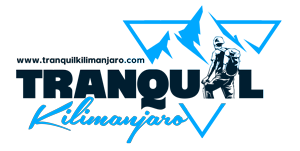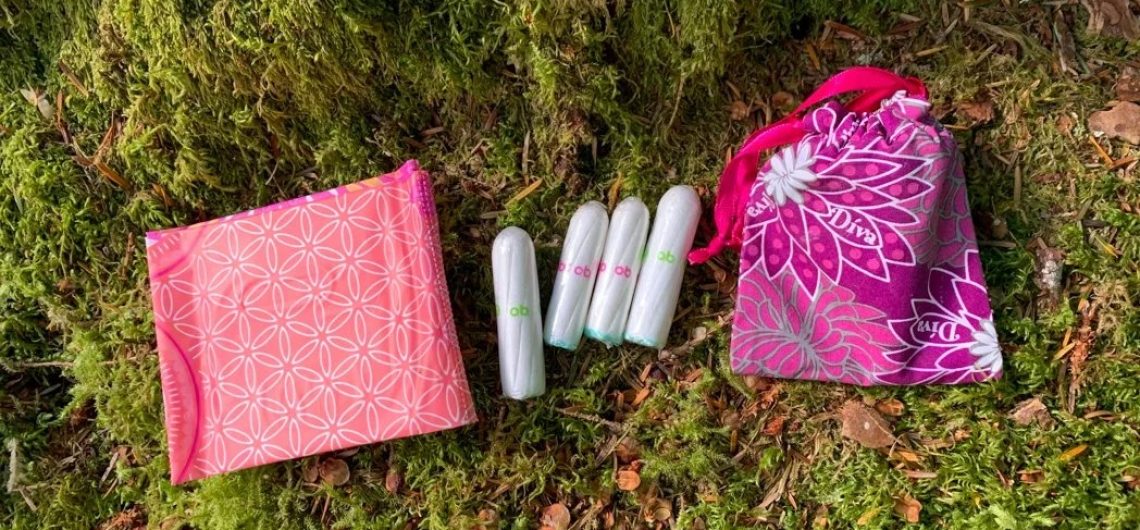Having your period during the trek on Mount Kilimanjaro doesn’t have to stop you from reaching the summit. High altitude can mess with your menstrual cycle, bringing surprises like early periods, irregular flows, or intensified symptoms. Whether you’re expecting your period or not, preparation is key to managing it on the mountain. Cups are a convenient option for carrying out waste in alpine environments, but they can be messy and time-consuming. They can be changed twice a day, making it easier to change during mid-climb. Tampons/pads require more waste but are cleaner and don’t require rooting around in tent vestibules. They can be used in a blue bag with antiodour powder, but may need to be changed midday. A combination of cups and period underwear can help catch leakage during summit pushes. Tampons are many ladies’ favourite option for heavy days, as dealing with overflowing cups in the backcountry is not fun. On lighter days, you can use a cup to throw in and forget about for the day.
Here’s a detailed guide to help you trek with confidence, covering everything from packing essentials to handling hygiene and staying mentally strong.
Understand How Altitude Might Affect You
When you climb Kilimanjaro, the altitude—reaching 19,341 feet—puts stress on your body, which can throw your menstrual cycle off balance. You might get your period earlier or later than usual, or notice changes like heavier or lighter bleeding. Symptoms such as cramps, fatigue, or mood swings could feel stronger when paired with altitude challenges like shortness of breath. Every woman’s experience is different, so even if your period isn’t due, plan as if it might show up unexpectedly. Being ready for this wildcard will keep you focused on the climb.
Selecting the Right Menstrual Products
Choosing the right menstrual products is crucial for comfort and practicality on Kilimanjaro. Here’s a breakdown of options, based on climber feedback:
| Product | Advantages | Challenges |
|---|---|---|
| Tampons | Compact, discreet, easy to use | Requires frequent changes, creates waste |
| Pads | Easy to use, no insertion needed | Bulky, may shift during hiking, more waste |
| Menstrual Cups | Eco-friendly, long-lasting (up to 12 hrs) | Needs clean water for rinsing, sanitation concerns |
| Period Panties | Comfortable, reduces waste, reusable | Need multiple pairs, storage for used ones |
Many climbers recommend a combination approach. For instance, using tampons during active hiking days for their compactness and switching to period panties at night for added security. Menstrual cups are praised for generating less waste, but cleaning them can be tricky with limited water—bring a small bottle or wet wipes if you opt for this. Period panties, like those from brands like Thinx, are increasingly popular, offering comfort and reducing the need for frequent changes, but ensure you pack enough and have a way to store used pairs. Some tour operators offer private toilets for an additional fee, which can provide more privacy and ease for changing products, enhancing comfort during the trek.
Pack Smart: Essential Gear for Your Period
Since Kilimanjaro has no shops or running water, you’ll need to carry everything you might need. Here’s what to pack:
- Menstrual Products: Bring what you’re comfortable with—tampons, pads, menstrual cups, or period underwear. A mix can be useful: tampons for active days, period panties for overnight. If you’re new to cups, practice beforehand—they’re great for less waste but tricky with limited water.
- Hygiene Supplies: Wet wipes (biodegradable if possible), hand sanitizer, and a small water bottle or peri bottle for rinsing are must-haves. Baby powder can keep things fresh during long days without showers.
- Waste Management: You’ll need to pack out all used products due to the “leave no trace” rule. Use small, sealable biodegradable bags for discreet storage, plus a larger zip-lock to hold them until camp disposal.
- Pain Relief: Ibuprofen or your preferred painkiller can tackle cramps (check with a doctor for altitude safety). Lightweight heat packs are a bonus for comfort at camp.
- Clothing Tip: Dark-colored pants or leggings hide potential leaks and boost your confidence.
Pro Tip: Track your cycle before the trip with an app or calendar. Altitude can disrupt it, but knowing your usual pattern helps you prepare.
Managing Hygiene on the Mountain
Kilimanjaro’s bathroom setup is basic—think long-drop latrines or private toilets if your operator provides them. Privacy and water are scarce, so here’s how to stay clean:
- Changing Products: On the trail, find a secluded spot behind rocks or bushes. Tie a jacket around your waist for extra privacy if needed. At camp, use toilet tents for more coverage. Keep wipes and sanitizer handy in your daypack.
- Staying Clean: With no showers, wet wipes are your best friend for quick cleanups. A microfiber towel can dry things off, and baby powder keeps underwear feeling fresh.
- Preventing Issues: Sanitize your hands before and after changes to avoid infections, which can sneak up on long treks.
Hygiene takes effort, but it’s worth it to feel comfortable and healthy.
Handling Waste: Leave No Trace
You can’t leave anything behind on Kilimanjaro, including menstrual waste. Pack small biodegradable bags for used products and store them in a zip-lock in your pack. Most camps have bins where you can dispose of trash daily—check with your operator. If not, you’ll carry it until you descend. It’s a hassle, but it keeps the mountain pristine.
Dealing with Period Pain at Altitude
Cramps and discomfort can hit harder when you’re climbing, though some women find their symptoms lighten up at altitude. Here’s how to manage:
- Pain Relief: Bring painkillers (confirm they’re altitude-safe) and heat packs for camp. Hydration—3–4 liters of water daily—helps ease cramps too.
- Pacing Yourself: If pain slows you down, take breaks or adjust your speed. Tell your guide if it’s rough—they can support you.
- Surprising Perks: Some climbers report less pain at altitude, possibly due to how the body adapts. Prepare for the worst, but you might get lucky.
Practical Tips from Climbers Who’ve Been There
Women who’ve tackled Kilimanjaro on their period share these gems:
- Always Be Ready: Even if your period isn’t due, pack supplies. One climber got hers a week early and was glad for spare tampons.
- Mix Products: Try pads for hygiene, tampons for convenience, or period panties for ease. Keep a “period kit” in your daypack with essentials.
- Talk to Your Guide: Don’t hide it—guides are there to help with breaks or pace tweaks. They’ve seen it all.
- Feel the Power: Summiting on your period can make you feel unstoppable. Use it as fuel to push through.
Choose the Right Menstrual Products for the Trek
Your choice of menstrual products can make or break your comfort on Kilimanjaro. Disposable and reusable options each have trade-offs, especially under LNT guidelines and the trek’s rugged conditions. Here’s the breakdown:
Disposables
- Tampons: Compact and familiar, tampons are easy to pack but require frequent changes. Collier suggests ditching applicators pre-trip to cut waste—“They’re the most common period trash I see in the backcountry.” Opt for applicator-free versions or try Thinx’s reusable RETA applicator ($60), a lightweight silicone tool you load with a tampon and reuse.
- Pads: Simple but bulky, pads can chafe during long hikes. “Add BodyGlide For Her ($5) to prevent irritation,” Tocce recommends. They absorb well and pack out easily, aligning with LNT, but take up more space.
Reusables
- Menstrual Cups: Eco-friendly and long-lasting (up to 12 hours), cups like the Diva Cup ($40) or Blossom Cup ($17) are ideal for reducing waste. They require clean water for rinsing—tricky with Kilimanjaro’s limited supply—so bring a small bowl or pot, soap, and extra water. Empty into a cathole, clean, and bury the waste. “Practice first,” Tocce advises; insertion takes skill.
- Period Underwear: Comfortable and leakproof, options like Thinx hip-huggers ($34) or Knix’s three-pack ($56) absorb a day’s flow (depending on the model). They’re sweat-wicking but need washing—wring blood into a cathole, scrub in a bowl, and dry between uses. “Bring at least two pairs,” Tocce says, so one dries while you wear the other.
Mix and Match
Many climbers combine products: tampons or cups for active days, period underwear for nights. Disposables excel at packing out waste, while reusables cut weight long-term but demand cleaning. Test your setup on shorter hikes before tackling Kilimanjaro.
Stay Mentally and Emotionally Strong
A period on top of altitude can test your mind as much as your body. Feeling moody or drained is normal, but you’ve got this:
- Own Your Resilience: You’re not alone—countless women have summited while menstruating. It’s a badge of strength.
- Be Kind to Yourself: Rest when you need to. The summit isn’t going anywhere.
- Celebrate the Win: Managing your period while climbing makes every step a triumph.
You’ve Got This!
Climbing Kilimanjaro on your period is totally doable with the right prep and mindset. Pack smart, stay clean, handle discomfort, and lean on your inner strength. It’s not just about reaching the top—it’s about proving you can handle anything. So gear up, embrace the challenge, and enjoy standing on the Roof of Africa. You’re tougher than you think!
![]()

